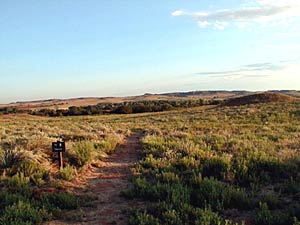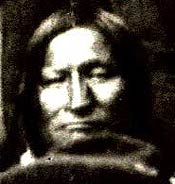
It was at Washita in 1868 that General George Armstong Custer of the U.S. Cavalry first raised the ire of the Plains people.
Four years earlier, Black Kettle had complied with a request to lay down arms but was turned away from the confines of the fort at which he surrendered because there was not enough food to feed the Cheyenne.
They were told they could return to their camp on the banks of Sand Creek in Colorado. There, Major John Chivington, had been told the camp at Sand Creek was hostile. Arapaho not passive Cheyenne, attacked Black Kettle and his band killing hundreds of men, women and children.
 Again at Washita, Black Kettle and his band of Cheyenne were camped in peace, when a dawn raid by Custer and his Seventh Cavalry took them by surprise.
Again at Washita, Black Kettle and his band of Cheyenne were camped in peace, when a dawn raid by Custer and his Seventh Cavalry took them by surprise.
An all-day battle raged. Reinforcements arrived from other tribes camped along the Washita River. By the time Custer withdrew and ordered the village burned to the ground, casualties were high on both sides and included Black Kettle.
Major E.W. Wynkoop, former commander at Fort Lyons, Colorado, insisted that Black Kettle had complied with army terms for peace years before and was mistakenly targeted again. The complaints of Wynkoop were ignored, however, in favor of boosting Custer’s image of an extraordinary Indian fighter.
The Washita battlefield is located just west of Cheyenne, on Oklahoma 47A 25 miles north of Interstate 40.
The Black Kettle museum is located nearby in the town of Cheyenne, Oklahoma at the junction of Highway 283 and Oklahoma 47. The museum is open Tuesday through Saturday from 9 a.m. to 5 p.m. and from 1 to 5 p.m. on Sunday.
Telephone for both sites – 405. 4967.3929.





